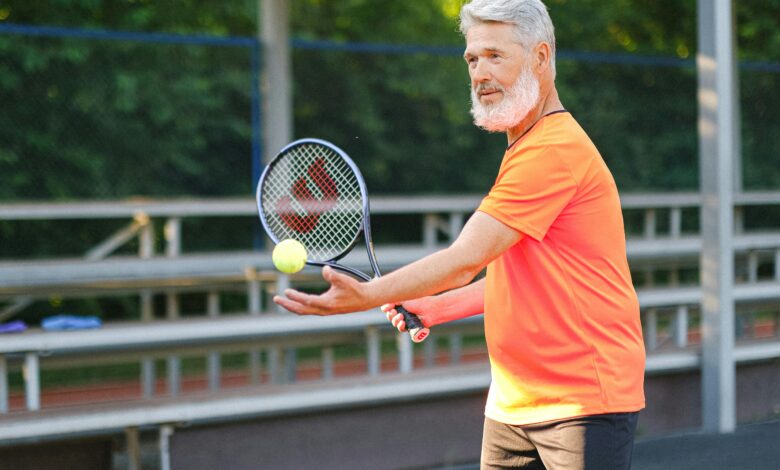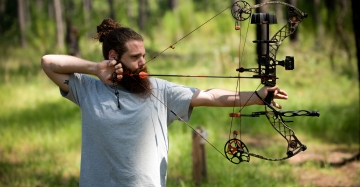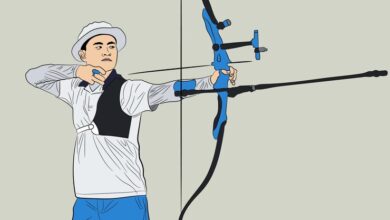Can You Play Pickleball With Bad Knees?

Can You Play Pickleball With Bad Knees? It is feasible to play pickleball with damaged knees, but you need to be mindful of your health and take precautions.
Compared to high-impact sports like basketball or jogging, pickleball is a low-impact activity that is easier on the knees. If you have knee issues, though, you should take precautions to safeguard your joints. For example, you should wear supportive shoes, use knee braces if needed, and warm up appropriately before playing.
Additionally, it is advised to refrain from abrupt movements and abrupt changes in direction as these activities may further strain the knees. Pickleball is a fun and social sport that can be enjoyed by those with poor knees as long as they take care and modify their playing style to reduce the chance of aggravating their knee discomfort.
Best Exercises For Pickleball And Knee Pain
On the other hand, some exercises can help people with knee pain feel better and avoid getting hurt again. For pickleball players experiencing knee pain, low-impact exercises like swimming, cycling, and water aerobics are some of the greatest options for exercise.
These workouts engage the muscles surrounding the knee joint and improve cardiovascular health. Stretching and flexibility exercises are also essential for increasing range of motion and reducing knee stiffness.
Furthermore, workouts like lunges, squats, and calf lifts that concentrate on balance and stability can assist enhance general joint health and guard against injuries on the pickleball court.
Players can keep enjoying the game of pickleball while also preventing pain and injury to their knees by including these exercises in their regular training regimen.
How Do You Protect Your Knees When Playing Pickleball?
When I play pickleball, I am careful to wear appropriate footwear with excellent support and traction to protect my knees.
This keeps me from slipping or falling and maybe hurting my knees. To further prepare my muscles and joints for physical activity, I always warm up before playing.
I concentrate on using good form and technique throughout the game to avoid putting undue strain on my knees. I also keep an eye on my surroundings and try to avoid making quick, abrupt movements that could hurt me.
Finally, I pay attention to my body and rest as necessary to avoid overusing my knees. I can play pickleball with less chance of damage by being aware of my motions and taking preventative actions to save my knees.
Common Knee Injuries with Pickleball
Patellar tendinitis, sometimes referred to as jumper’s knee, is one of the most common knee injuries among pickleball players.
The tendon that joins the kneecap to the shinbone becomes inflamed and painful as a result of the repetitive jumping and fast lateral motions that occur on the court. Meniscus tears are another common knee injury sustained in pickleball.
These injuries arise from rapid twists or turns that cause damage to the knee cartilage. Players should concentrate on wearing supportive footwear, warming up correctly before games, and strengthening the muscles surrounding their knees to prevent these ailments.
To prevent long-term harm, pickleball players should pay attention to their bodies and consult a doctor if they have chronic knee pain.
Is Pickleball Easier On The Knees Than Tennis?
Most people agree that pickleball is less taxing on the knees than tennis. This is because of several characteristics that set the two games apart, including court size and game speed.
Due to their smaller size compared to tennis courts, pickleball courts can help lower the risk of knee injuries by requiring players to cover less ground and make fewer abrupt movements. Furthermore, pickleball requires less running and jumping than tennis, which lessens the strain on the knees.
Since players in pickleball don’t have to lunge or bend as much to strike the ball, the lower net height also helps to reduce knee discomfort. pickleball is a more knee-friendly alternative for people who want to be active without overstressing their joints because of its slower tempo and shorter distance traveled.
Conclusion:
As long as they take the appropriate safety measures, pickleball players with poor knees can still have fun. Warm-up activities and speaking with a healthcare provider can help reduce discomfort and the risk of knee strain. Using the right gear and altering the gameplay can also assist lower the chance of harm. You may prioritize your knee health and still enjoy the fun of pickleball, even if some modifications might be necessary.


